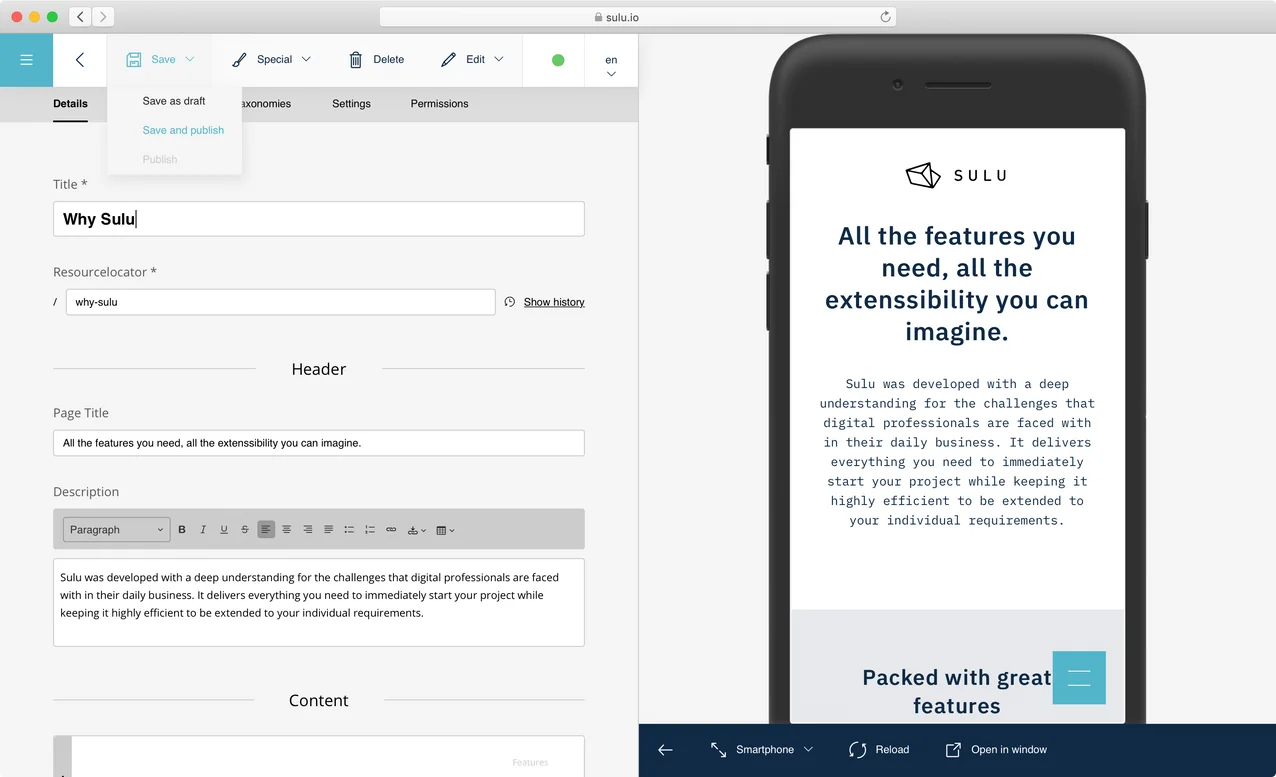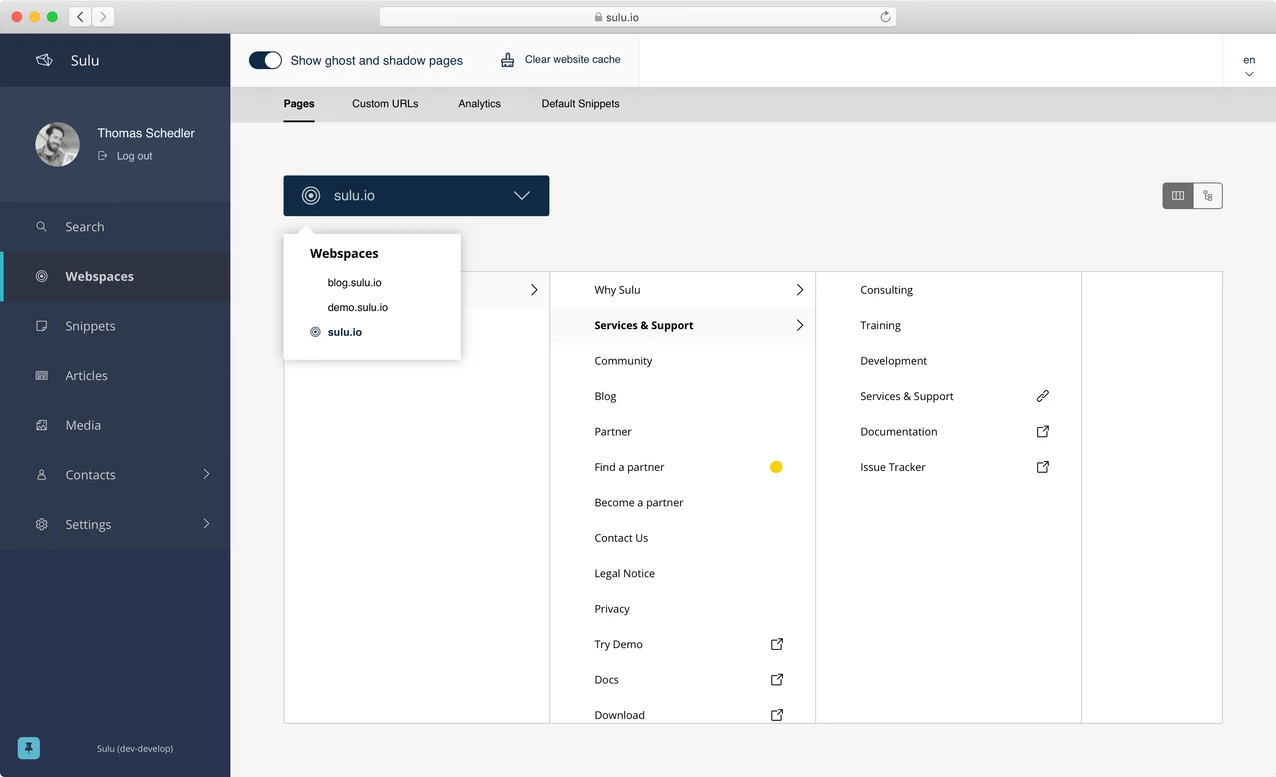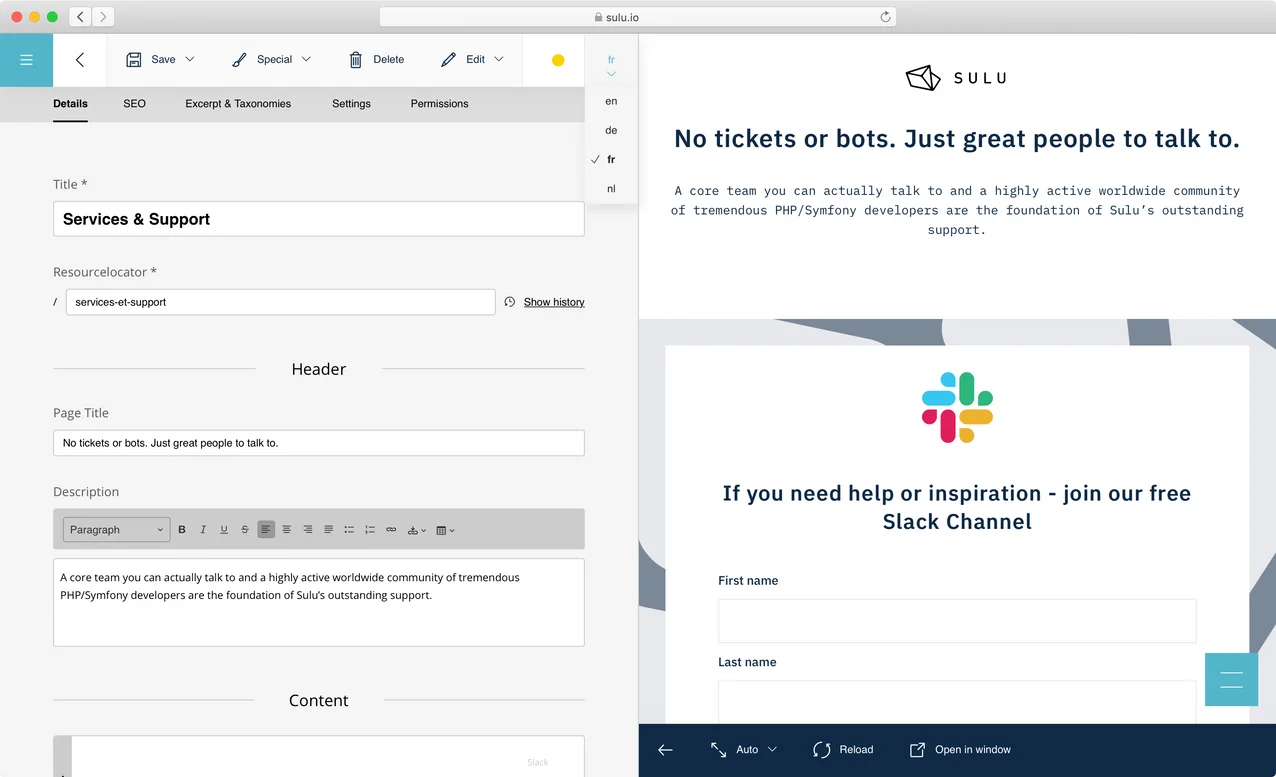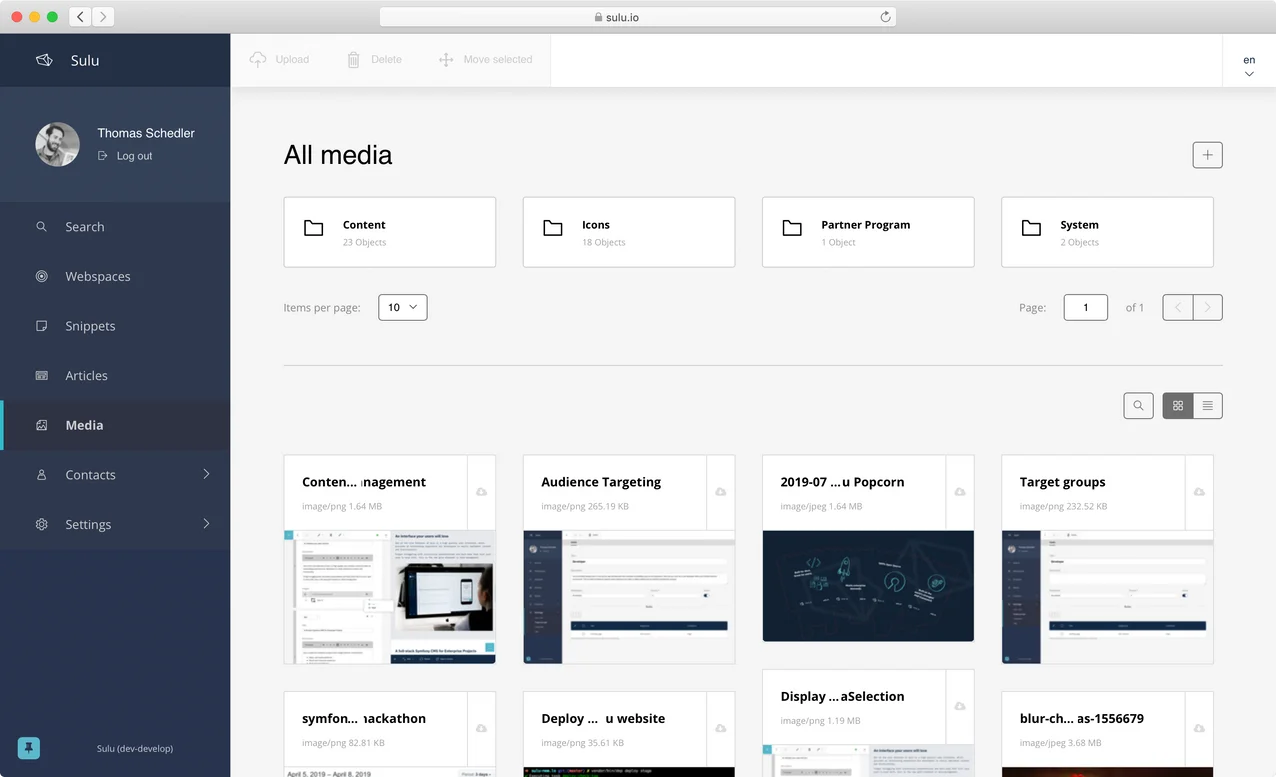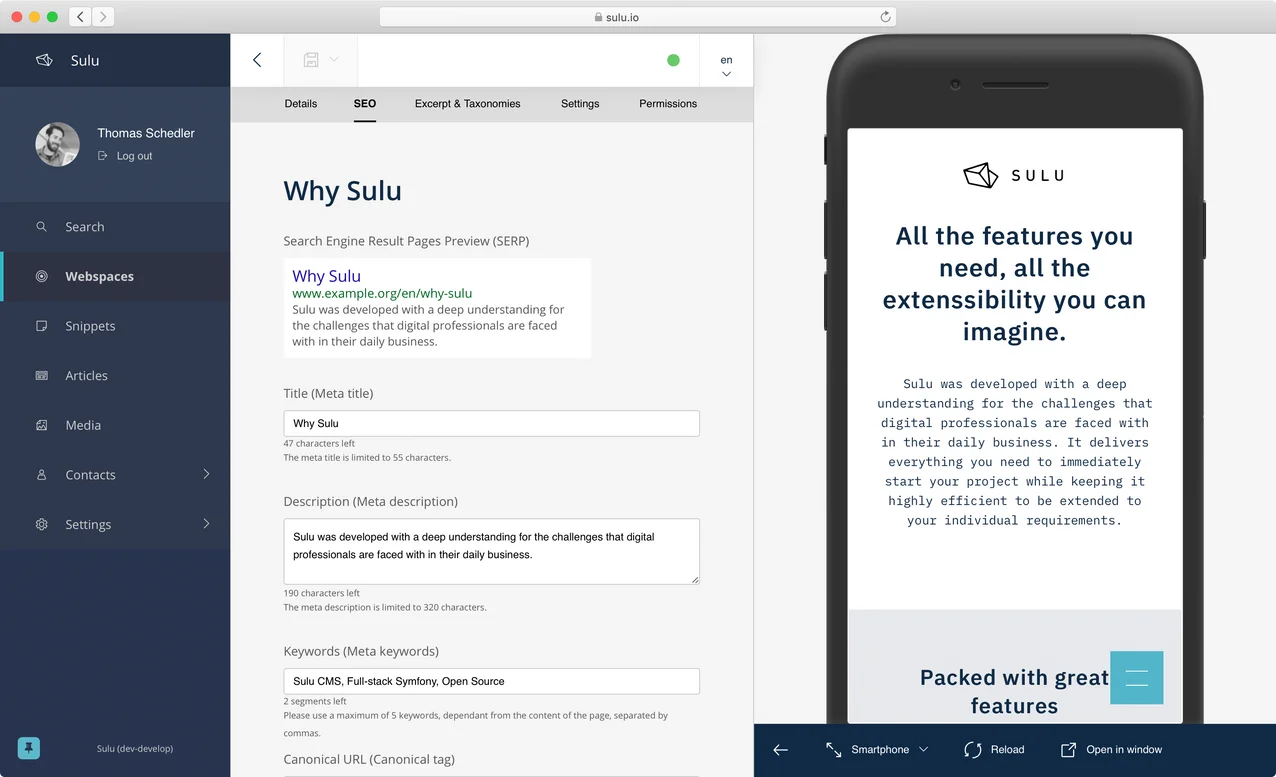Sulu 2.0 is here! The Symfony CMS, New and Improved
Sulu 2.0 is out! Version two of the Symfony CMS builds and improves on the strengths of version one and strives to be an ideal combination of PHP developer experience and agency platform. It is built to deliver enterprise-level functionality within complex websites and business-logic-driven applications, robust application development tools, and great user experiences for the content and marketing teams who work in the backend of your site every day.
I spoke with Thomas Schedler and Bernd Hepberger about the release of Sulu 2.0 and to explore my idea that “DX + UX == Sulu”. If you’re looking for a developer-focused content management technology that produces applications that users love, check out Sulu!
Thomas, Bernd, MASSIVE ART, and Sulu
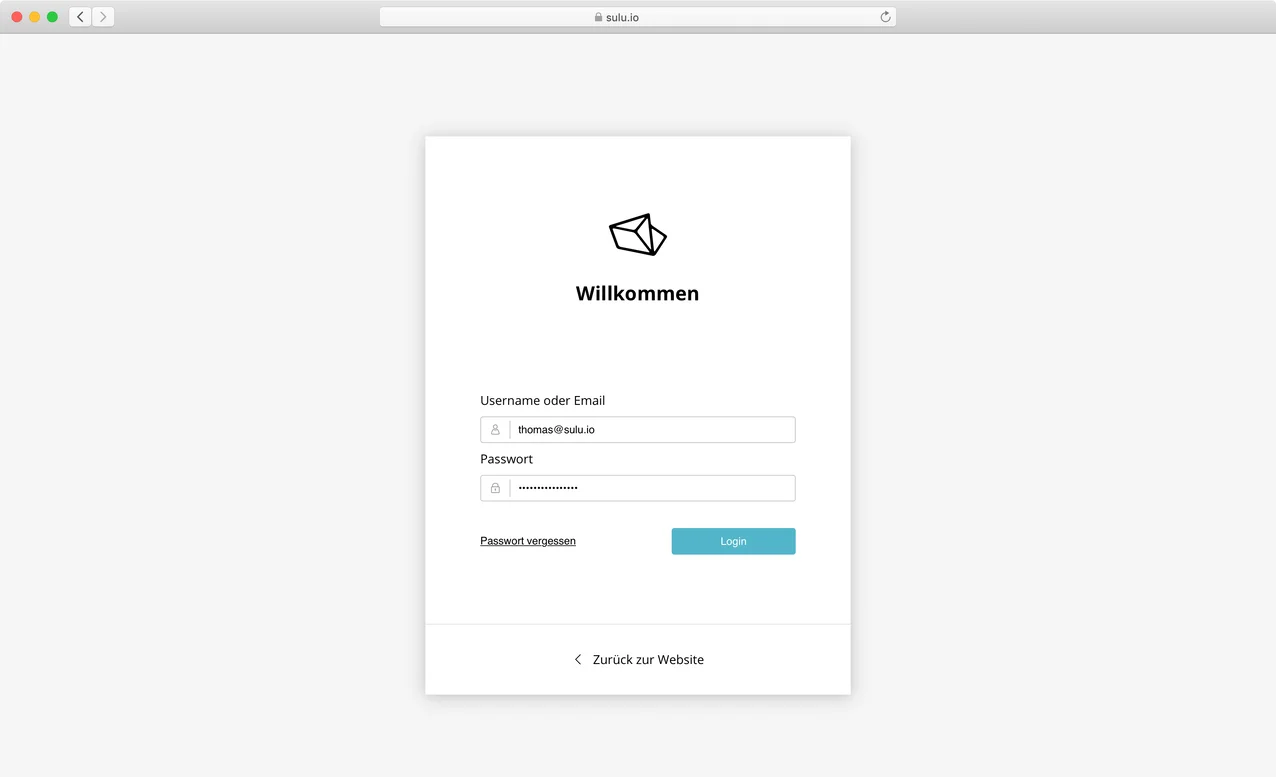
Thomas, Bernd, MASSIVE ART, and Sulu
Thomas Schedler worked for eight years as a software architect for MASSIVE ART WebServices in Austria, before spinning out Sulu as a separate business. The Sulu Content Management Platform was born from his needs as the technical lead of various digitalization projects, from complex business websites to e-commerce systems and IoT platforms. Today, he is the Co-Founder and CEO of Sulu GmbH, the company behind Sulu, supporting its development and offering consulting, services, and partnerships for the open source CMS.
Bernd Hepberger co-founded the MASSIVE ART WebServices agency with a group of designers more than 20 years ago. His dual titles reflect his broad skillset: Head of Digital Experience and CEO. As a consequence, MASSIVE ART’s approach to client work is very design-driven. This goes well beyond the visual alone, following and developing editorial-design, user experience and information architecture design principles.
Sulu, originally created to address the particular needs of this agency, reflects these design values. Its clean, structured code offers a great developer experience (DX) that has been built to deliver superb user experiences (UX) for the editors and content teams that live and work in the backend of most websites every day.
Sulu’s Value Proposition
Q: What is Sulu, what does it do? … Is it a CMS, a framework, or something else?
Thomas: Sulu is a CMS based on a solid framework — it is pure Symfony, extending it where we need — that empowers you to solve complex digitalization challenges. It’s ideal for building anything from complex website scenarios to web applications and even custom eCommerce solutions.
Q: When was Sulu created? What problem were you solving? Why did you build it?
Bernd: The core concept was developed using Zend around 2008. In 2015, we switched to Symfony and rewrote the complete application from scratch, building in everything we had learned along the way. The improvements in the 2.0 release build on almost five more years of experience.
Sulu has always been very focused on agency-created websites with more complex information architectures like ticket- and product configuration systems or recipe and cooking websites. Because it’s flexible and scalable, it’s not cluttered with solutions to edge-cases or functionalities no one needs. Sulu is a truly open platform for developing any kind of web project. It does very well as a central technology integrating multiple web applications while running hundreds or thousands of websites.
It has always been a joy to use for editors. Right from the start, Sulu offered great user experience and simple, intuitive ways to manage complex data. We have nice touches like instant WYSIWYG content preview for different screen sizes. And Sulu can be configured and adjusted to meet the individual standards of your teams, too.
Thomas: As developers, we felt that there was no CMS at the time (in 2015) that simultaneously fulfilled our need to work in (clean, solid) code while delivering multilingual, multi-portal functionality; a semantic content management approach; and an intuitive and consistent user interface (UI) and UX.
We worked hard to implement “No-Emergencies-on-Weekends” standards to make developers’ lives easier. There’s no configuration in the database, no executables can be triggered by the UI, neither in the frontend nor from the backend admin interface (e.g. installing plugins). All of this results in a stable, robust system.
With Sulu, I get to “work like a developer,” using a familiar development environment and a proven tool chain — full-stack Symfony — with all the advantages it offers. Sulu is a fully customizable state-of-the-art content management platform. And it’s fun to work with!
If you’re a Symfony developer, you’re already a Sulu developer!
The path to Sulu 2.0
The path to Sulu 2.0
Q: What has changed in Sulu 2.0? How does that make it even better than before?
Thomas: A major goal of the 2.0 release was to set ourselves up for future success and growth. Sulu 2.0 still offers a great developer experience and all the power to build complex, secure web applications featuring personalization, SEO optimization, powerful multisite and multilingual functionality, and headless applications that it always did. We’ve upgraded some minimum dependencies: PHP 7.2, Symfony 4.3 and we feel we’re ready for a new wave of features and development based on the new platform. I wrote a blog post about some of the changes a while ago.
Importantly, we rebuilt the administration interface from scratch, making it easier to extend with custom business logic (matching Sulu’s ability to integrate and process custom application logic). Since this is an important use case for Sulu in general, we’re excited about “tuning up” a major component like this.
Bernd: The 2.0 release was heavily influenced by community feedback and our goal of providing the best DX we can. One request very high on many people’s list was easier handling of the UI when developing individual modules. In Sulu 2.0, when you follow the coding and implementation guidelines, you get the Sulu backend UI generated for you automatically, without the need for boilerplate code. We learned a lot that people want to work with as little javascript as possible … one reason our codebase shrank by 128,000 lines of code.
By the numbers
Q: How long did that take to build Sulu 2.0? Was it "hard"? How much work was it?
Thomas: We put a solid two-and-a-half years into it — more than 7,800 hours. Our biggest challenge was getting the amount of extensibility and flexibility into the administration interface that we wanted.
Bernd: Compared to other vendors in the enterprise field, we work with a very small team of core devs. Our group is truly dedicated to the product. They did an amazing job, keeping what everyone loved and pushing the limits of what’s possible to make it better.
Sulu 2.0:
- 2,5 years - 7.800+ hours
- ~780 pull requests
- 278.000 lines of code added
- 402.000 lines of code removed!
Sulu?
Q: Okay really, why is it called “Sulu”?
Bernd: Honestly, no idea. We just thought it sounded cool …
Thomas: First at all, it had nothing to do with Star Trek ;-) … In fact, the first version of Sulu was based on Zend and was called “Zoolu”. At the time, every cool project needed two O’s … There was some question of exactly how to pronounce it and when we switched to Symfony we took the chance to rename Zoolu to “Sulu.”
Try it out! Get in touch!
If you’re looking for a developer-focused content management technology that produces applications that users love, check out Sulu! The team behind this Content Management Platform will be very happy to talk with you about adopting and getting the most out of it.
Agencies! Get in touch to find out more about Sulu for your agency or project. We offer custom development, training, consulting, and soon an official partner program.
Developers!
- Join the Sulu Slack channel.
- Sulu 2.0 on GitHub.
- Sign up for our occasional newsletter.
- Twitter:

